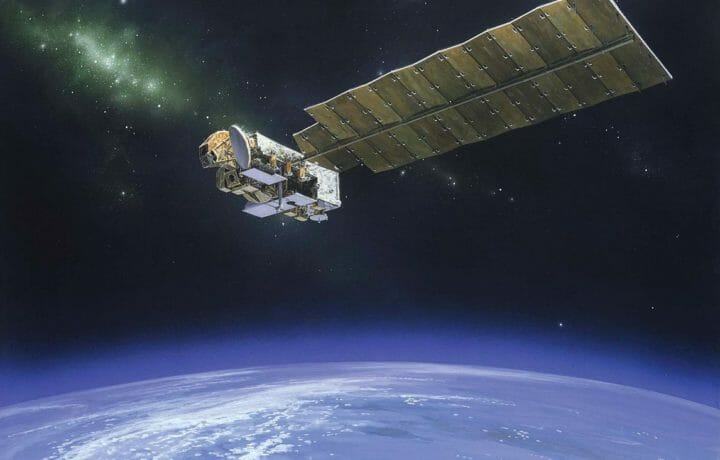The President Donald Trump and Vice President Mike Pence made a rare joint visit “across the river” to the Pentagon last week, announcing the release of the 2019 Missile Defense Review. The Department of Defense document is the first comprehensive examination of the state of the nation’s missile defenses in nine years, updating the 2010 Ballistic Missile Defense Review.
Speaking in the Pentagon Auditorium, the president made a statement that immediately evoked comparisons to the “Star Wars” Strategic Defense Initiative begun under President Ronald Reagan in 1983, vowing to take missile defense back into space.
“My upcoming budget will invest in a space-based missile defense layer,” he said. “It’s new technology. It’s ultimately going to be a very, very big part of our defense and, obviously, of our offense.” The headlines have since been filled with declarations that space-based missile defense is “unworkable,” or at best “unproven technology.”
But as usual, the truth is a bit less dramatic. We won’t see the president’s budget until the first Monday in February at the earliest. But when it is released, don’t expect it to include any grand plans for space-based interceptors.
Space is the Key to Hitting Missiles in their Boost Phase
Layered defense is important when confronting with ballistic missiles. Our current defenses—the Ground Based Midcourse Defense system, the Terminal High-Altitude Area Defense system, the Aegis and Aegis Ashore systems, and the Patriot missile system—only attack missiles in the second two-thirds of their trajectory.
But attacking a ballistic missile in its boost phase is exceedingly difficult, mainly because a ground- (or sea-) based missile would have be close to the launch site and it would have to get notice of the launch almost immediately. That’s why space-based interceptors are so attractive. They are also quite a way away. That doesn’t mean we shouldn’t continue to work towards them, though.
The MDR recognizes this importance and potential, but it does not make the kinds of promises the president’s speech seemed to imply.
These interceptors may give the ability to intercept ballistic missiles in their boost phase, the MDR’s introduction states. They may improve the overall chance of intercepting a ballistic missile. But that’s a long way from saying there will be space-based interceptors.
The Idea Faces Certain Opposition
The president’s budget is most likely to include a request for funding into research and development into the technology. Almost as soon as the president’s speech was complete, Rep. Adam Smith, the Washington Democrat who recently took-over as chairman of the House Armed Services Committee, released a statement.
The chairman supports the concept of ballistic missile defense, but the mention of a space layer predictably resulted in pushback. “While it is essential that we continue investing in proven missile defense efforts,” Smith said, “I am concerned that this missile defense review could lead to greater investment in areas that do not follow these principles, such as a space-based interceptor layer that has been studied repeatedly and found to be technologically challenging and prohibitively expensive.”
It is true that there have been multiple efforts to design a workable space-based defense layer. But one lesson I remember from childhood was that when President Kennedy decided that the U.S. would put a man on the moon by the end of the decade, he gave the problem to engineers, not scientists. While scientists would have spent years researching new materials and technologies, the engineers simply asked, “how can we get this done?” and then did it.
It is true that we have not yet been able to design a space layer for our missile defenses. That does not mean that we cannot dedicate a portion of the DoD’s science and technology budget—$13.7 billion in Fiscal Year 2019—to looking at new ways to attack the problem. The department has made massive strides in directed-energy weapons recently. We ought to have the ability to see if it’s possible to put them on a satellite and hit missiles with them.
While I agree with Smith that we must “ensure we are spending money on programs that are reliable and rigorously tested before they are deployed,” that belief ought not rule out some prudent spending to see how the latest technological advances might aid intercepting missiles early before they leave the territory of the rogue state that launched them.




